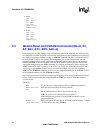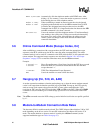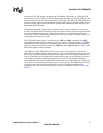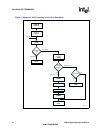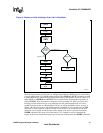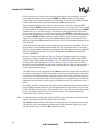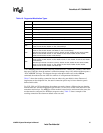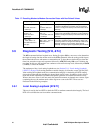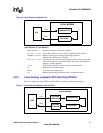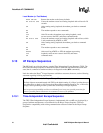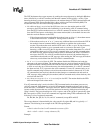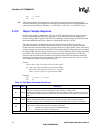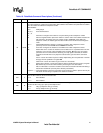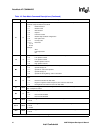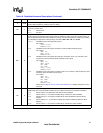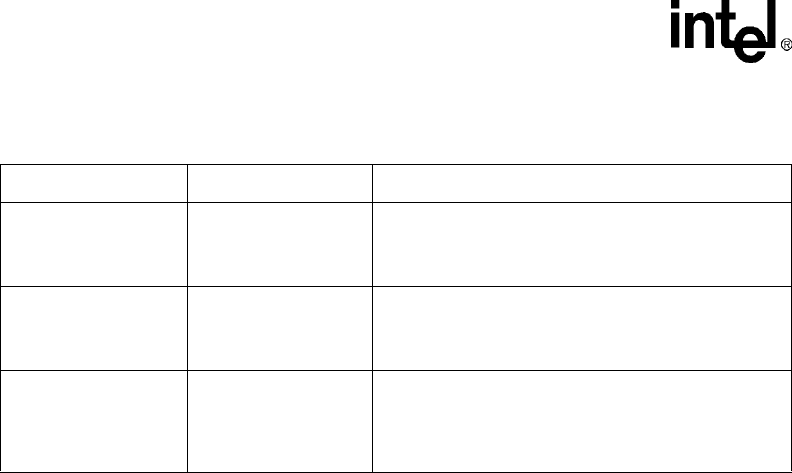
36 536EX Chipset Developer’s Manual
Intel Confidential
Data Mode AT COMMANDS
3.9 Diagnostic Testing [S18, &Tn]
The &Tn command initiates loopback tests. Setting S-register S18 to a non-zero value determines
the length of testing after the modem receives the &Tn command. After the testing period elapses,
the modem halts the test and returns to command mode. To abort the test before the test timer has
timed out, enter the escape code sequence followed by AT&T0. Setting S18 to an ’0’ disables the
test timer. In this case, the loopback test continues to run until an escape code, followed by AT&T0
(or ATH), is sent to the modem.
The modem provides a local analog loopback test (see Section 3.9.1, “Local Analog Loopback
[AT&T1]” on page 36) for testing modem-to-modem integrity in all modes except V.90 and V.92.
After entering the loopback mode, the communication integrity is checked by the DTE sending
data to the modem and then checking the looped-back data for errors. In addition, in the self-test
mode the modem implements an internal data pattern generator and checker that detects errors.
When a data error occurs in self-test mode, the modem increments an internal error counter. Upon
completing the test, the modem sends a three-digit error count to the DTE. These tests are
illustrated in the following examples.
3.9.1 Local Analog Loopback [AT&T1]
This test is used by the local DTE to check the DTE-to-modem communication integrity. The local
DTE will not initiate the test from online command mode.
Table 17. Resulting Modem-to-Modem Connection Rates with Non-Default Values
Originating Modem Answering Modem Resulting Connection Speed
+MS = V34, 1, 0, 0, 0,
0;
the UART data rate =
115,200 bps
+MS = V32, 1, 0, 9600,
0, 0;
the UART data rate =
14,400 bps
9600 bps: the originating modem is configured to attempt
a maximum 28,800 bps connection, but the answering
modem is configured to attempt a maximum data rate of
9600 bps.
+MS = V34, 0, 33,600,
33,600, 0, 0;
UART data rate =
115,200 bps
+MS = V32B, 1, 0,
9600, 0, 0;
B1 and UART data rate
= 14,400 bps
No connection: the originating modem is configured to
attempt only a 33,600 bps connection, but the answering
modem is configured to attempt a maximum data rate of
9600 bps.
+MS = V32,
1, 7200, 9600, 0, 0;
and UART data rate =
7200 bps
+MS = V34, 1, 0,0, 0, 0;
UART data rate =
9600 bps
9600 bps: the originating modem is configured to attempt
connection at between 7200 to 9600 bps or below. The
answering modem is configured to attempt a data rate of
9600 bps or below. The connection takes place at
7200 bps, the highest speed supported by both modems.



